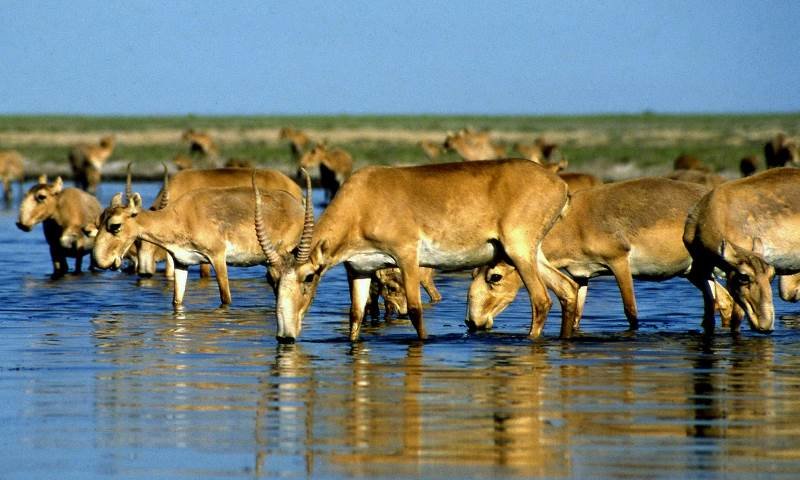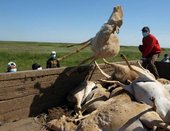
The mysterious mass deaths of about 200,000 saiga antelopes in Kazakhstan last year was caused by a bacterial infection.
As news emerged in May last year of the near-total decimation of the Betpak-Dala population of saiga antelope, there was plenty of speculation but few concrete answers as to what might have been responsible.
Kazakhstan's mass antelope deaths mystify conservationists
One idea was that rainfall had resulted in widespread, mortal bloat. Perhaps there had been some infectious disease that had wiped out herd after herd. Some even blamed poisoning by toxic rocket fuel spread around Kazakhstan's Baikonur Cosmodrome.
In the runup to this year's breeding season, which is when the animals are at their most vulnerable to such events, the Saiga Conservation Alliance (SGA) has released the latest thinking on what caused the mass mortality in 2015. Several labs have confirmed the presence of the bacterium Pasteurella multocida in tissue samples from carcasses collected during last year's die-off.
134,000 saiga antelope dead in two weeks. What is the probable cause?
This pathogen normally lives harmlessly in the respiratory tract of these antelope but it appears to have run amok, resulting in hemorrhagic septicemia. This is known to occur in wild and domestic animals in grassland ecosystems, but it has never resulted in close to 100% mortality as was observed in the Betpak-Dala population. Research efforts are now concentrating on figuring out how the Pasturella could have taken over as it did.

Prior to the deaths last year, the global population of saiga stood at around 262,000. The decimation of the Betpak-Dala herd means that there are now fewer than 100,000 animals in existence.
"With the saiga's calving season just around the corner in early May, you can feel the tension mounting amongst everyone who works with this critically endangered species," says Caryln Samuel, SCA's administrator.



"lies harmlessly"... sounds like us...